(it’s probably not the method you have been using!)
Do we really need another zipper pocket tutorial in the sewing blog world? A quick google search yields dozens of helpful results. So why am I adding my own version? Because most of the zipper pocket tutorials at the top of the search results are missing some steps!
Maybe the common methods people are using are meant to be easier, but I think that adding a couple of steps and a few minutes of time to get a professional looking zipper pocket is worth the extra bit of time and effort.
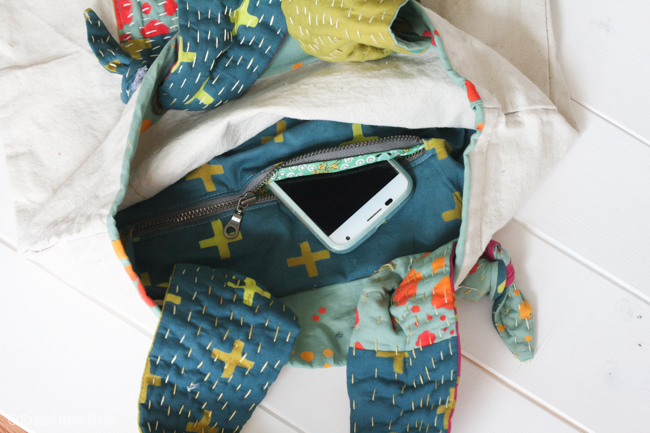
The most common zipper pocket method I see is like Deby’s method at So Sew Easy. She uses the actual interior pocket piece to make a facing for the opening. This creates a clean edge around the zipper opening, but it also leaves the zipper tape exposed on the inside of the pocket. (See below.) I’ve seen plenty of store-bought items with zippers installed this way, so it isn’t necessarily wrong. But you want a truly professional zipper pocket, you can hide that zipper tape with just a couple of extra steps.
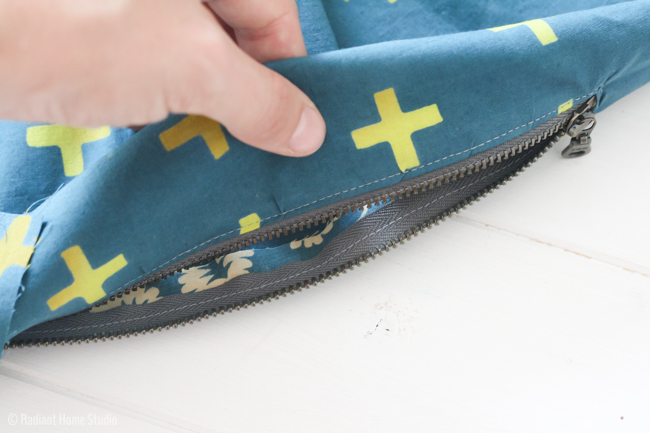
The other zipper pocket method I see is like this one at Emmaline Bags. This method hides the zipper tape, but it’s is hard to get a nice clean edge around the opening. I usually end up with fraying fabric in the corners, which is not very pretty. The finished pocket is also less stable than a pocket with a facing.
This zipper pocket tutorial method combines these two techniques to create a clean and professional zipper pocket with no exposed zipper tape and added stability.
How to Sew a Professional Zipper Pocket:
Materials:
• a bag lining or other project that needs a zipper pocket
• a zipper (I’m using a 9″ zipper for the example)
• a scrap of medium weight fusible interfacing
• 1/4 yd. pocket fabric (use a pattern piece or cut a rectangle 2″ wider than the zipper and twice as long as you want the pocket depth)
• a zipper foot
Professional Zipper Pocket Tutorial:
1. You’ll need your bag lining (or another project), a pocket piece, and a facing piece. Cut a rectangle from your fabric that is 2″ longer than your zipper and 2″ wide. (Mine is 11″ x 2″.) This is the pocket facing. Cut the same rectangle from interfacing and fuse it to the pocket facing piece.
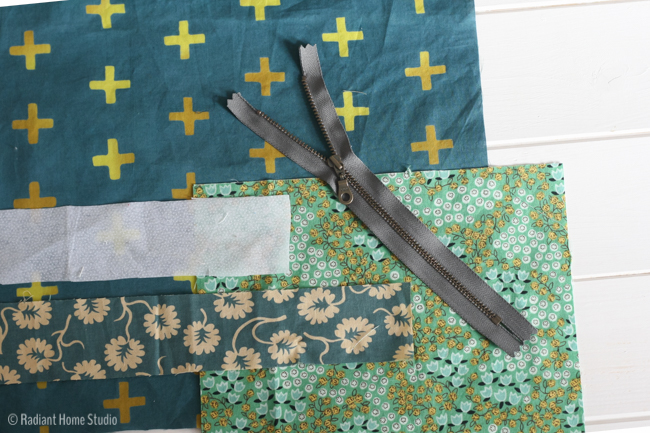

2. On the wrong side of the facing (on the interfacing), draw a line the length of your zipper teeth across the center.
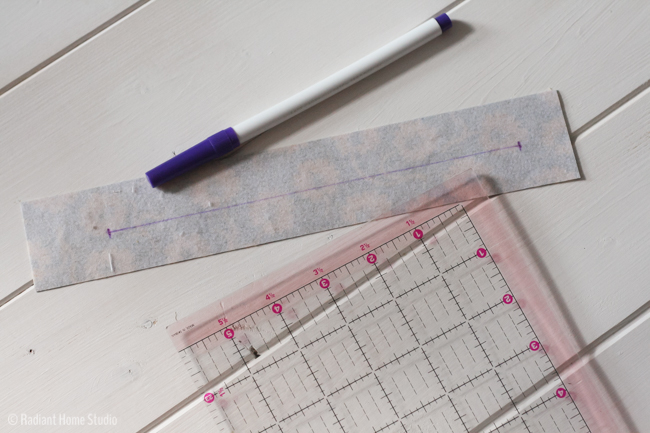
Draw two more lines, 1/4″ above and below the first line. Connect the ends to make a rectangle, and draw diagonal lines from the corner to the middle line.

3. Place the pocket facing right sides together with the bag lining, centered over the place you want the zipper.
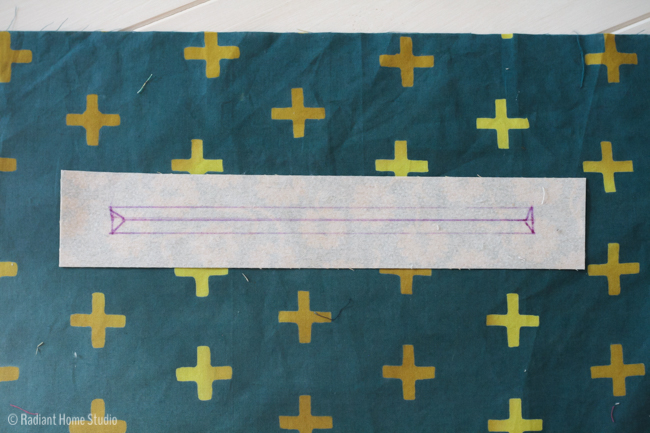
Sew around the outer rectangle, using shorter stitches on the ends.
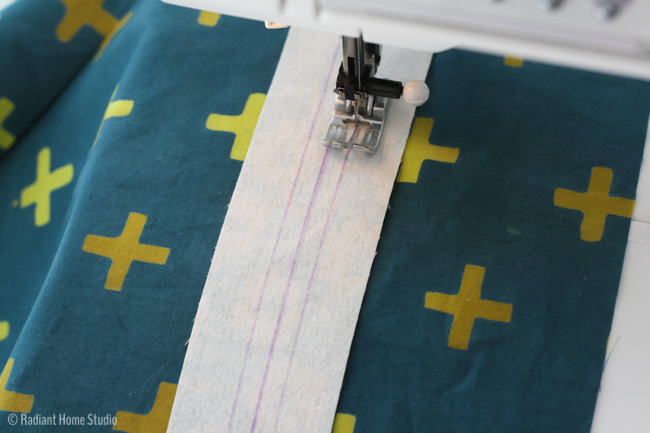
4. Cut along the center line and into the corners at the diagonal lines.
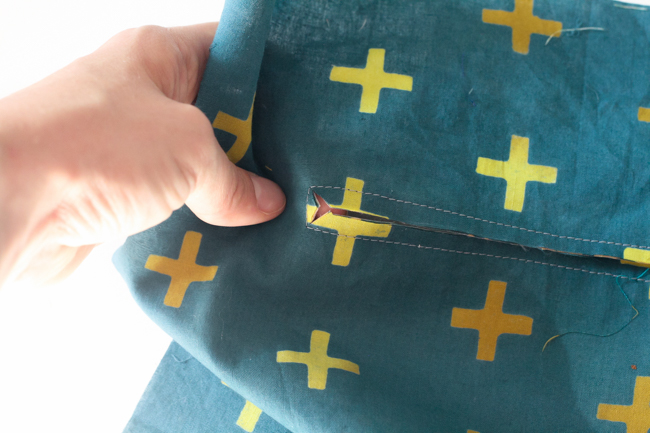
Push the facing through the hole and press flat.
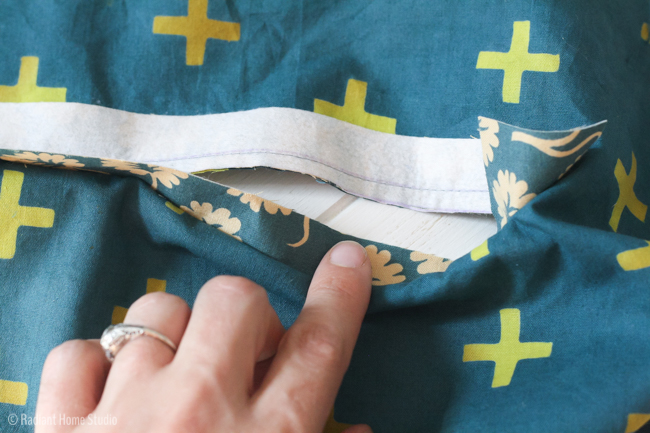
Below is the wrong side of the lining.
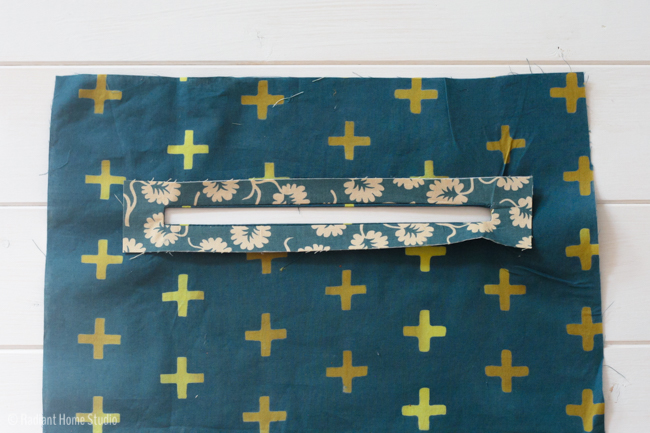
5. Align the opening over the zipper. Using your zipper foot, stitch around the edges of the opening. If you find that the zipper is slipping, you can try using fusible tape to keep it in place or a couple pieces of gift wrapping tape (which you can sew through and easily remove).
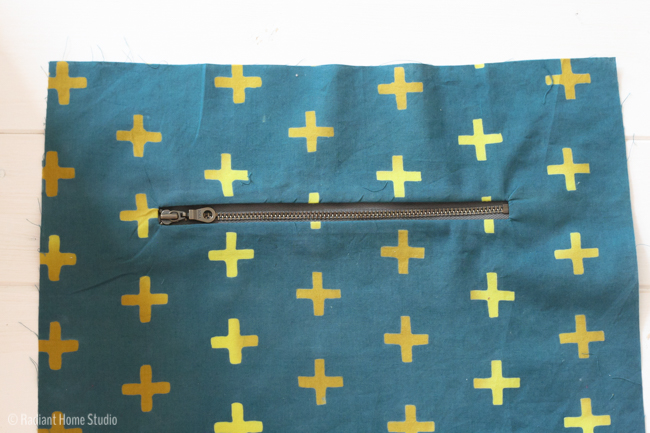
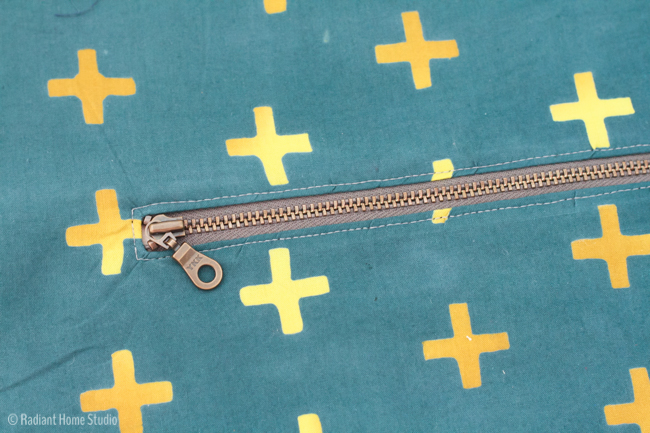
6. Align the wrong side of the upper zipper edge with the right side of the pocket piece. Fold the top of the bag lining out of the way. Stitch the upper edge of the zipper to one end of the pocket piece as close to the seam as possible. Make sure you are only sewing through the pocket piece, the zipper tape, and the facing piece.

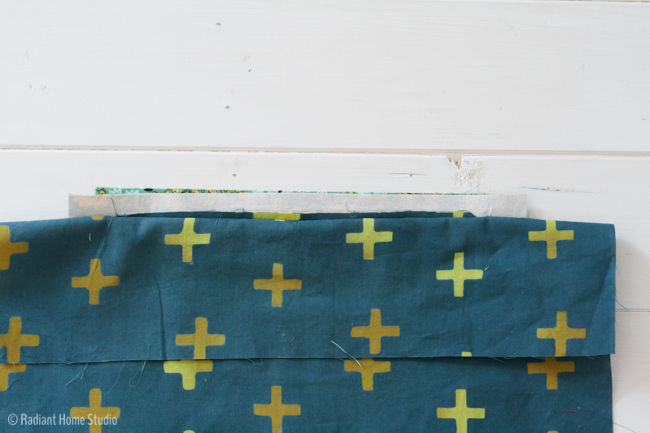
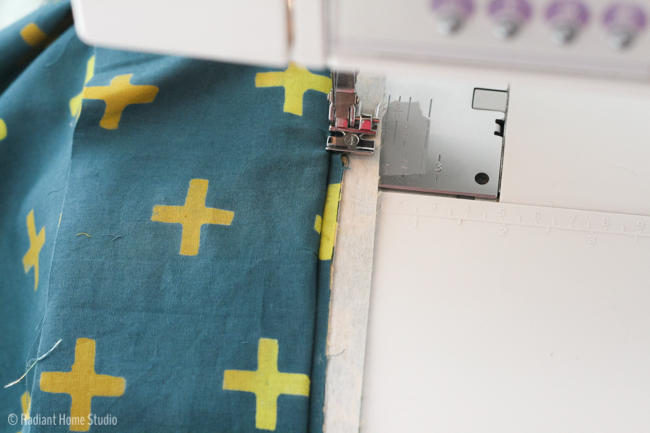
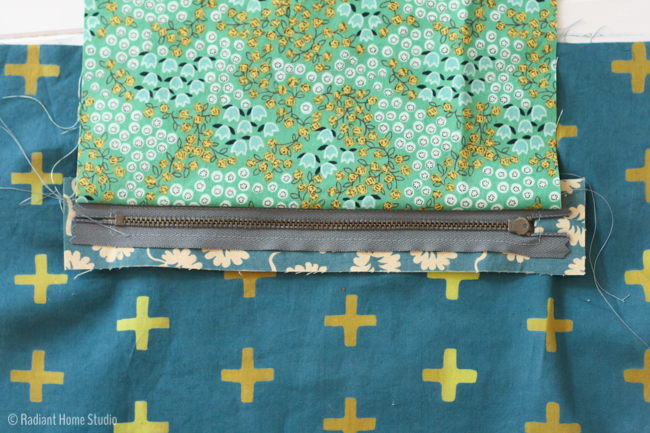
7. Take the other end of the pocket piece and align it with the bottom edge of the zipper. Fold the bottom of the bag lining out of the way, and stitch the pocket piece to the zipper as close to the seam as possible.
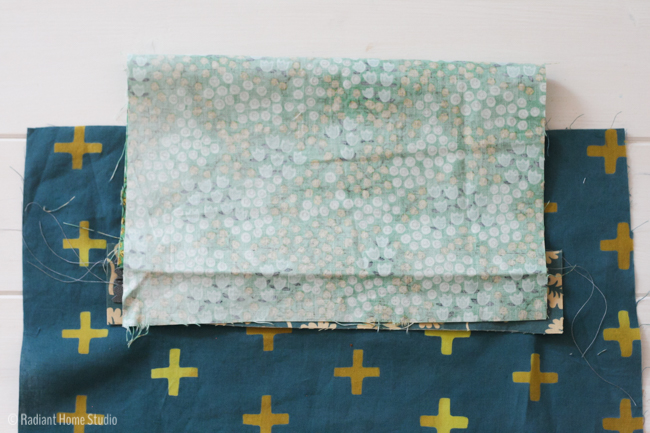
When you finish, it should look like this.
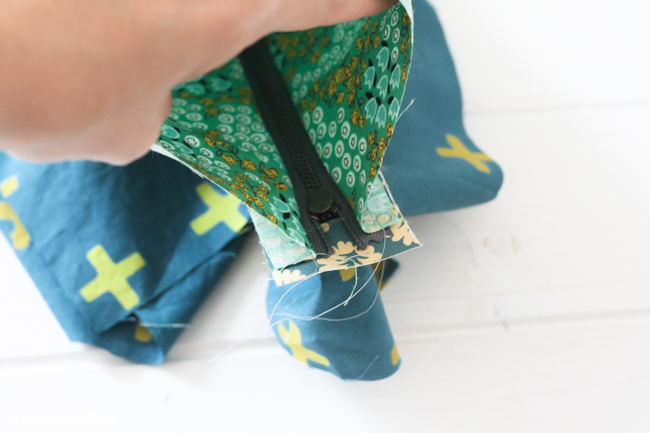
8. Press the pocket piece toward the bottom of the bag. Fold the sides of the bag lining out of the way. Stitch along the side of the pocket, from the top to the fold, catching the ends of the zipper tape in the stitching. Repeat for the other side. Trim the excess pocket fabric if needed.
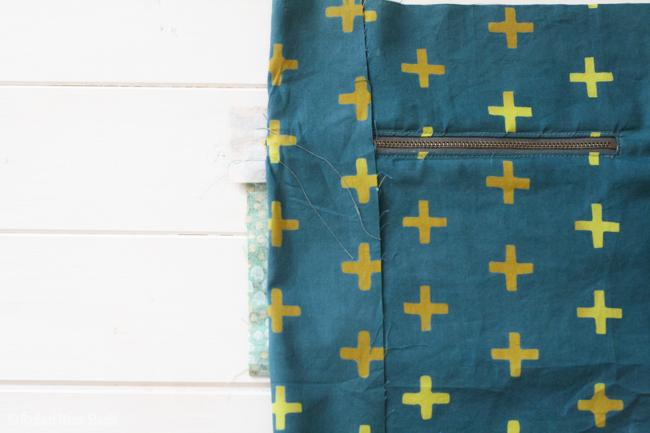
That’s it! See How nice the inside looks! You can use this zipper pocket method in place of the common methods included in your sewing patterns. I regularly toss aside zipper directions and install zippers using this process.
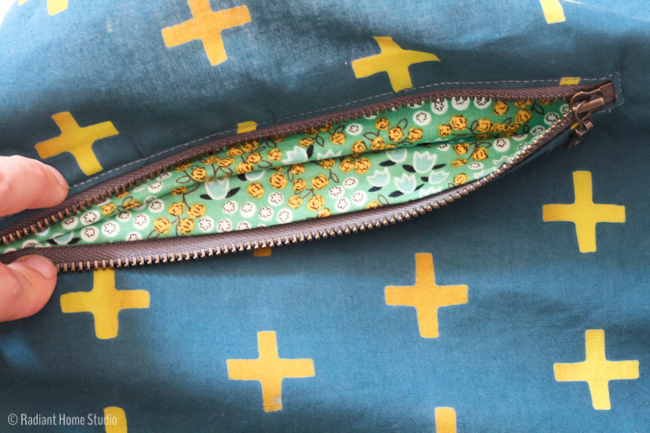
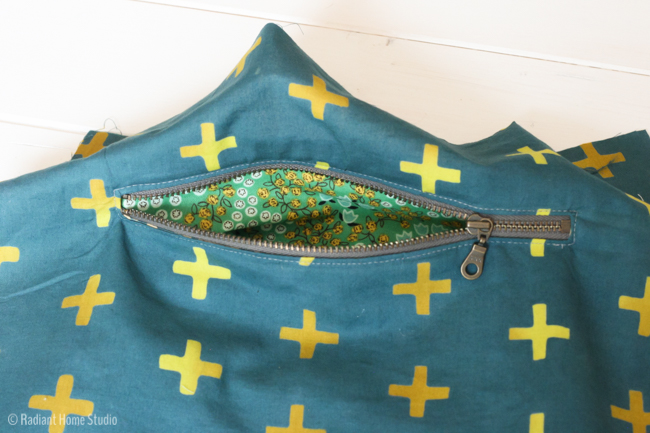
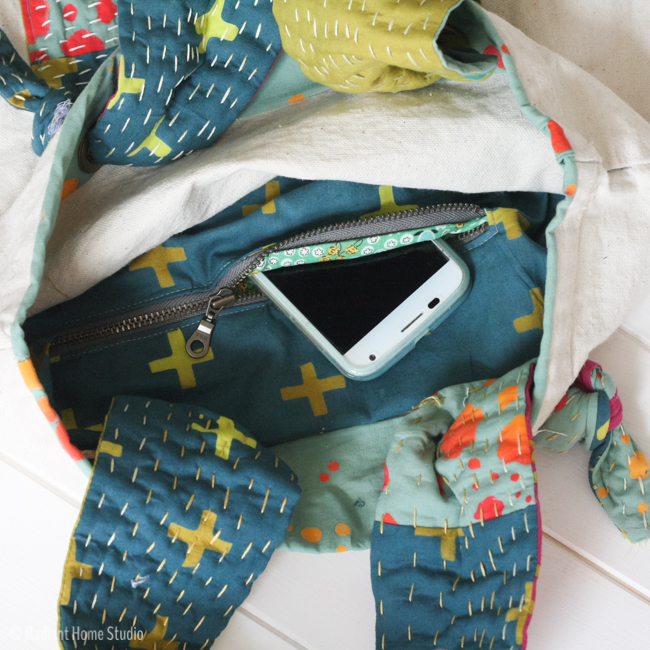
I’ve updated the Retro Rucksack pattern to include this type of zipper installation (and adding some other helpful tips!). If you have the original version of the pattern, you can use this tutorial to replace the interior zipper pocket directions included in the pattern.
What do you think of this method for sewing zipper pockets? Will you try it next time?



Great application. I like it because the zipper doesn’t have anything in the way to jam it up.
Thank you! Yes, it does slide nicely without getting jammed up.
looks very pretty! A glue stick helps to keep zippers from slipping too.
Thanks! Yes, glue stick helps too!
You just blew my mind! This is incredible cool and really makes it look more professional. This is one of those things that I never even thought… “hey that could be done better.” Awesome tutorial. I’m pinning this to use it later! <3
Thank you! What a nice compliment! Thanks for sharing it!
Great idea, not seen this technique before – pinned:)
Thanks for sharing it Vicky!
Very professional!
Some years ago I attended a tailoring class where we learned how to make a tailored jacket (as part of a man formal suit) and we used the same technique to create the front pockets 🙂
Yes, another person mentioned that they use this technique for welt pockets too. It looks very nice on tailored items as well!
I am so delighted to see this. It’s been something I’ve been meaning to work on and then never got round to it. I knew there had to be a better way. You are a star!
Thanks Deby! It’s certainly not a new technique, but it’s not a method that is widely shared by bloggers. Maybe people are trying to keep it simple, but I know I’m not the only one that likes to hide those zipper edges!
سلام سارای عزیز
سایت شما فوق العاده است و برای من بسیار الهام بخش است
متشکرم
Thank you!
Hi Sara – love your expertise at sewing and photography. Would love to see a tutorial about replacing a side-seam, winter coat pocket.
Thank you for the idea! If I happen to have a coat pocket that needs replacing, then I’ll definitely post a tutorial. If you have a picture of a particular problem with your coat, feel free to email it to me. Usually, you can examine the way it’s put together, take out the part that’s not working, trace replacement pieces, and try to sew them back in the way you removed them. Sometimes that requires taking out a couple more seams to get to the areas you need and then sewing them back at the end.
Thank you Sara for coming up with this idea! I’ve tried both methods you described and always use Deby’s method but don’t like the visible edges of the zipper tape. It never occurred to me that there was a way to cover that up. What a smart cookie you are!! I’ll try your method next time but already know that I’ll use it from now on.
I found your site because I’ve been looking for ideas on how to add an external zipper on a bag that needs interfacing like fusible pellon such as H630 and can’t find any clues. All the sites say to use interfacing like SF101 which I do and it’s great on med/heavy fabric but not enough interfacing on quilting fabrics. I guess I will just have to use a sew in along with SF101 throughout.
Thanks again
Carol
Thank you! I can’t take credit for the idea. I can’t remember where I first saw it or how I figured it out, but I know other sewists use a similar method. In fact I saw a similar technique in “The Better Bag Maker” when I was browsing it yesterday.
I haven’t used many of the thicker interfacings, but I don’t see why you wouldn’t be able to make this type of pocket work. I’d suggest cutting the facing piece a little larger. You might also have to do more clipping around the seam allowance.
I have just tried your technique but have found that the fabric tends to crease a bit in the corner after pushing the facing inside. Any way to avoid that?
Yes! Usually that happens when you haven’t clipped in to the corner as far as you can.See if you can clip into the corner a few more threads. You can also make a couple more cuts about a 1/4 in. away from the corner to give it a little more ease. Usually between that and some steam, you can get it to lay flat!
Hello
This looks and reads like ‘the’ best internal zip pocket tutorial I have seen and read and I’ve seen and read lots. I’ve bookmarked it for future reference (you should do a PDF for easy download) and I will practice this on scrap fabric.
Thank you for your time in doing this tutorial.
With blessngs.
Cee Jay.
Thank you so much!
This is a very impressive sewing tutorial which seems to be a rare find on the internets.
The explanations and photos are laid out perfectly making it easy to follow and understand both the why and how of the steps.
Thank you very much for putting your time and care into this 🙂